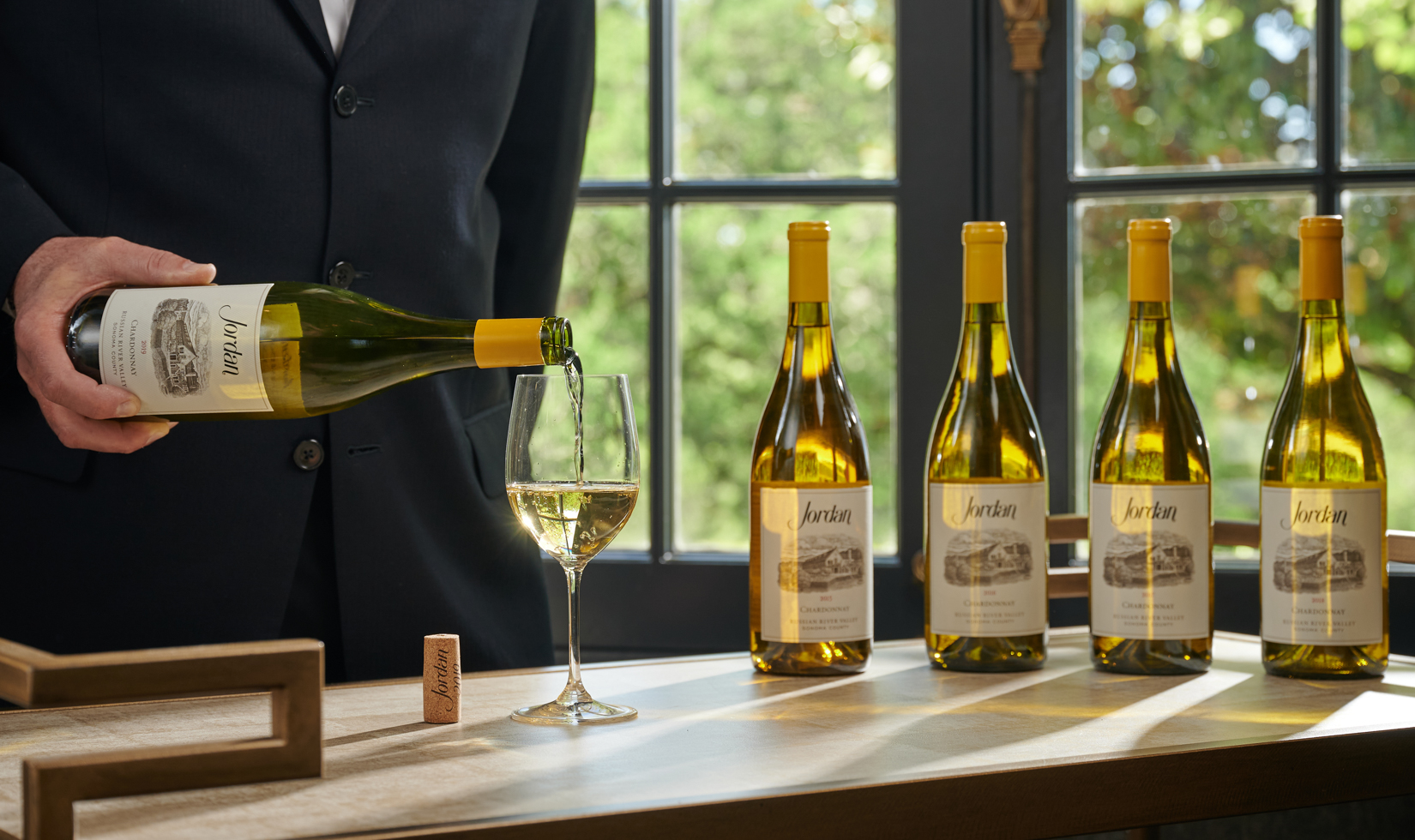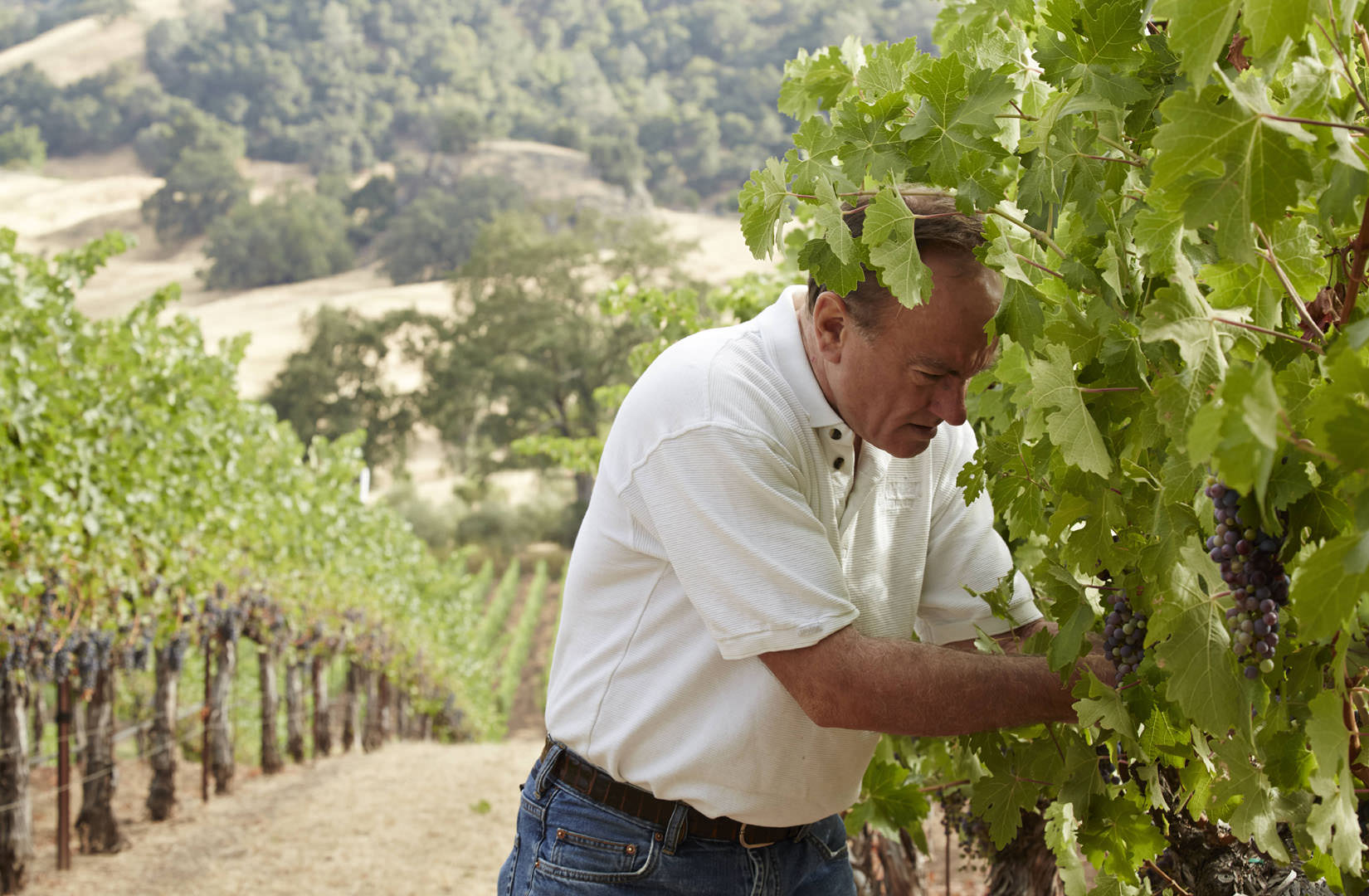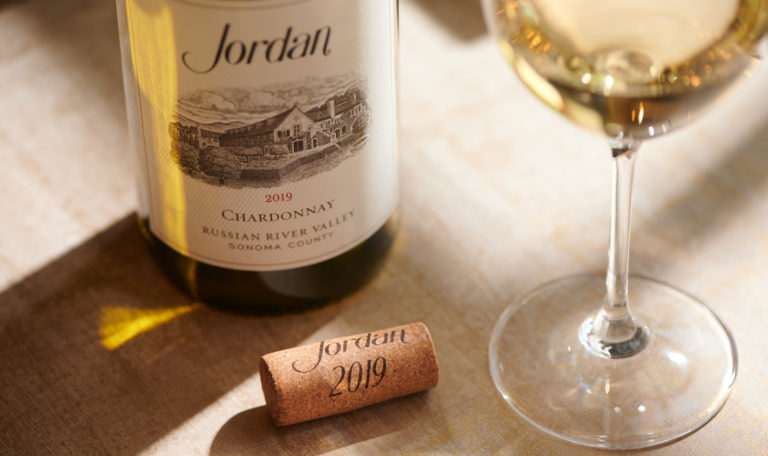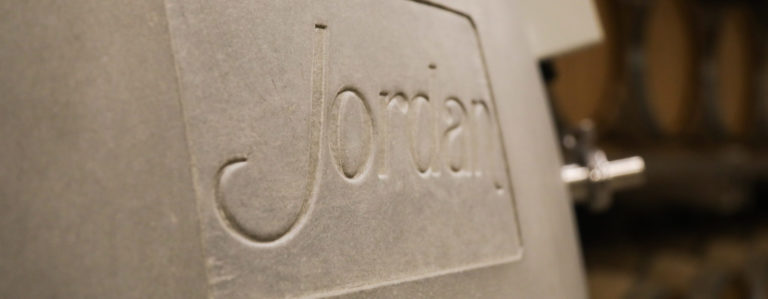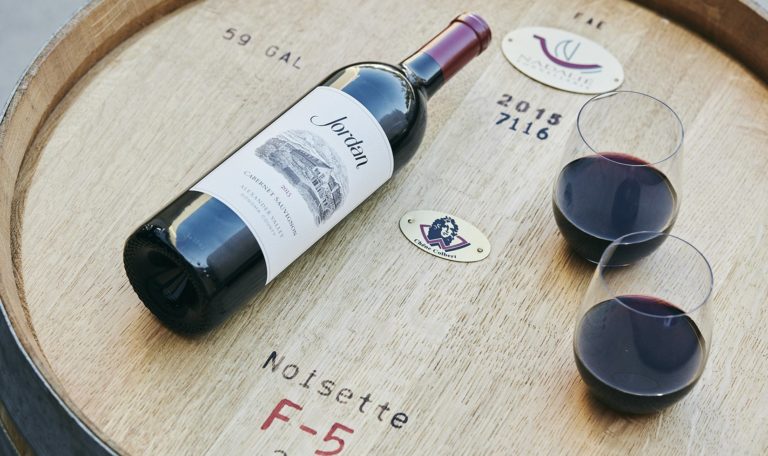How to best our best vintage. That sounded like an exhilarating challenge to me. Even though the 2019 Jordan Chardonnay was named one of the year’s best in both Wine & Spirits and Wine Enthusiast, we were already putting a plan in motion to try to raise the quality of our singular white wine even higher, starting with the 2021 vintage.
We call this winemaking experiment, Operation Super Blend. For a winery that only makes two wines, the opportunity to craft a super Chardonnay blend wine is not only rare but very exciting. Many of my peers ask how I keep boredom at bay, making just two wines with already established winemaking styles. I love to explain that while we only make a Russian River Valley Chardonnay and Alexander Valley Cabernet Sauvignon, we are constantly tweaking and elevating to fine-tune our wine programs. Over the last 15 years of working at Jordan, I have had a front-row seat to the many changes we have made to improve our cabernet. And the time had arrived to truly focus on the chardonnay program; this project was a welcomed opportunity to change. We’ve made just one super blend before—a cabernet dominant wine from the 2005 vintage. In 2021, we set out to produce our first super blend of chardonnay.
I wish I could take credit for this idea, but I can’t. It was John Jordan’s, our winery owner. During the 2020 vintage, I started to slowly play around with sourcing fruit from cooler areas of Russian River Valley. As I started to taste the different fruit and acidity that came from these grapes, I knew I needed more. I tasked Dana Grande, our grower relations manager, with finding more cooler-climate chardonnay. John could see I was absolutely giddy about this new fruit. A few months before the 2021 harvest, John buzzed into my office as he often does and said, “I have an idea to run by you.” That’s when he pitched me on Operation Super Blend 2.0.
The best way to describe a Jordan Super Blend is to explain how our first super blend came to be.
When John took over the winery in 2005, he asked Rob Davis, my mentor, if anything could be done to raise the quality of Jordan wines even higher—all while staying true to his parents’ original vision and our elegant style of winemaking. That year, Rob made our dream cabernet sauvignon for John—a blend of our favorite grower and estate vineyard blocks, aged in our favorite French oak barrels. The wine was comprised of 79% cabernet, 14% merlot and 7% petit verdot. This wine was made in a Saint-Julien style similar to the wines of Ducru Beaucaillou. We called it the “Super Blend” because it was the best blend we could produce from that vintage. One year later, the 2005 Jordan Cabernet Super Blend excited us all so much that John gave winemaking the greenlight to shift Jordan’s entire production to this more fruit concentrated, even silkier rendition of the classic Jordan house style.
By 2015, Jordan’s winemaking team had reached our goal of elevating the entire Jordan Cabernet Sauvignon production over to super blend status—and that’s why 2015 is the first vintage in Jordan history aged entirely in French oak.
Five years later, we were ready for our next winemaking challenge. Enter Operation Super Blend 2.0: Chardonnay.
Building the Jordan Chardonnay Super Blend was quite different from our approach to a Bordeaux blend. Though exploring new vineyard sources was the first step for both projects, the similarities stop there. With Jordan Cabernet, our super blend experiment also focused on tweaking percentages of grape varieties, as well as types and styles of oak barrels. We increased merlot in the blend and shifted away from more aggressive American oak barrels. With a white wine whose 100 percent varietal composition and French oak barrel-aging were not up for discussion, there were three approaches we took to bring more layers of aroma, flavor and texture to the wine: vineyard location, grape clones and alternative aging vessels.
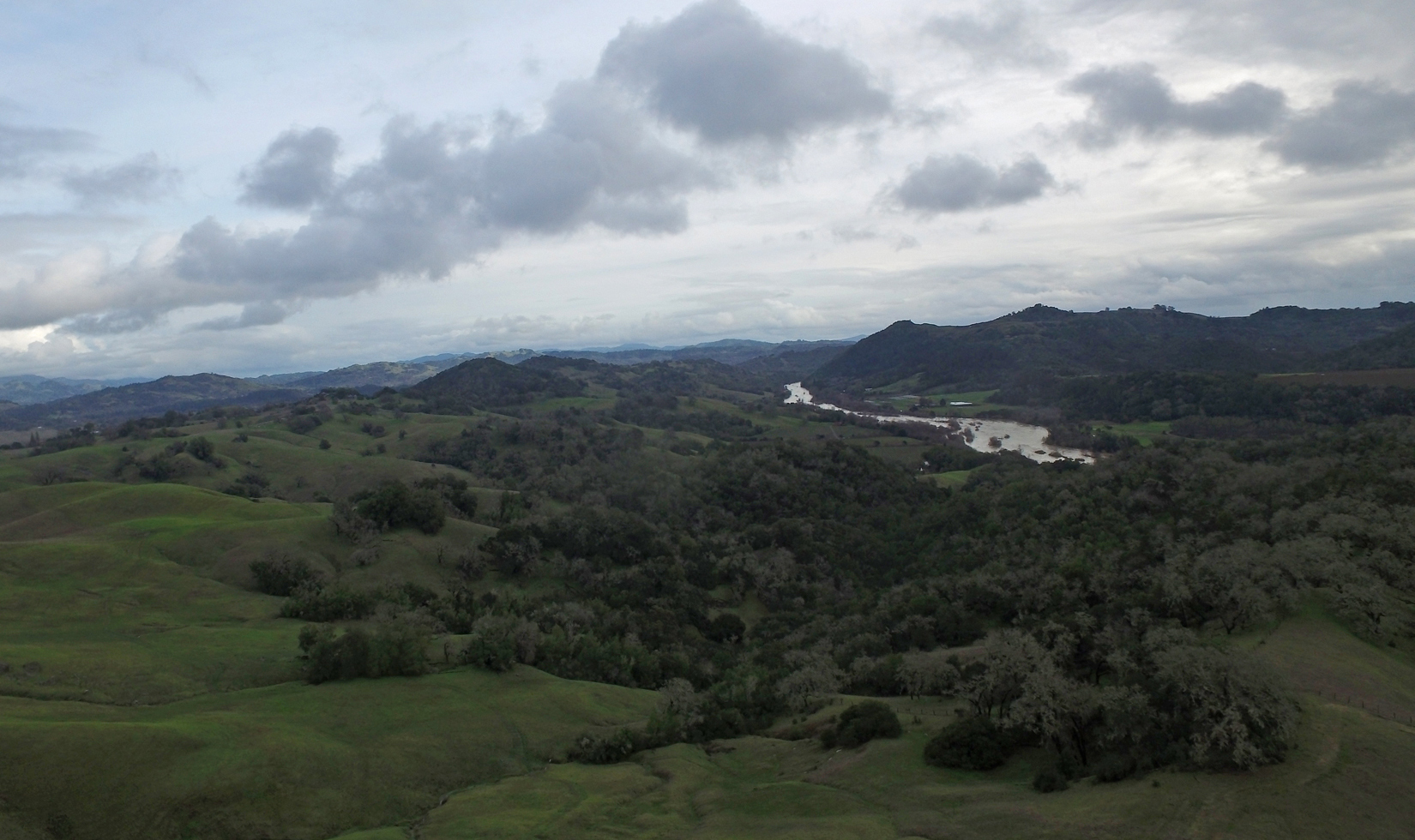
A Winemaker’s Climate Migration
Our first step was identifying new vineyards that could bring more flavor dimension, as we did with the 2005 Jordan Cabernet Super Blend. This time, we sought out cooler-climate vineyards located farther west in the Russian River Valley to bring more bright acidity, minerality and expressive citrus and stone fruit flavors. As the climate continues to get warmer, the vineyards we’ve worked with for years in eastern Russian River aren’t consistently delivering the crispness and juicy acidity our style of chardonnay demands. We’ve started our own mini climate migration within Sonoma County as three new vineyards were added to the Jordan Chardonnay program. Two Brothers Vineyard is in Sebastopol Hills, in a much cooler area, so one would assume that the beginning of the growing season would be much later. However, for this site, bud break was shortly after all our other sites, and what sets this site apart is the slow maturation of flavors and the extra hang time these grapes receive during the growing season. The complexity of this juice as it’s gently pressed has so much depth in flavor. Martinelli Vineyard brings that cool-climate dimension and ripe flavors at lower sugar levels. The final new site is Dehlinger Ranch, which probably excited me the most during harvest. This fruit delivered everything a winemaker dreams of; if we made a single-vineyard designate, this site would probably be it. The acidity, minerality and fruit flavors were so harmonious—the wine literally made itself.
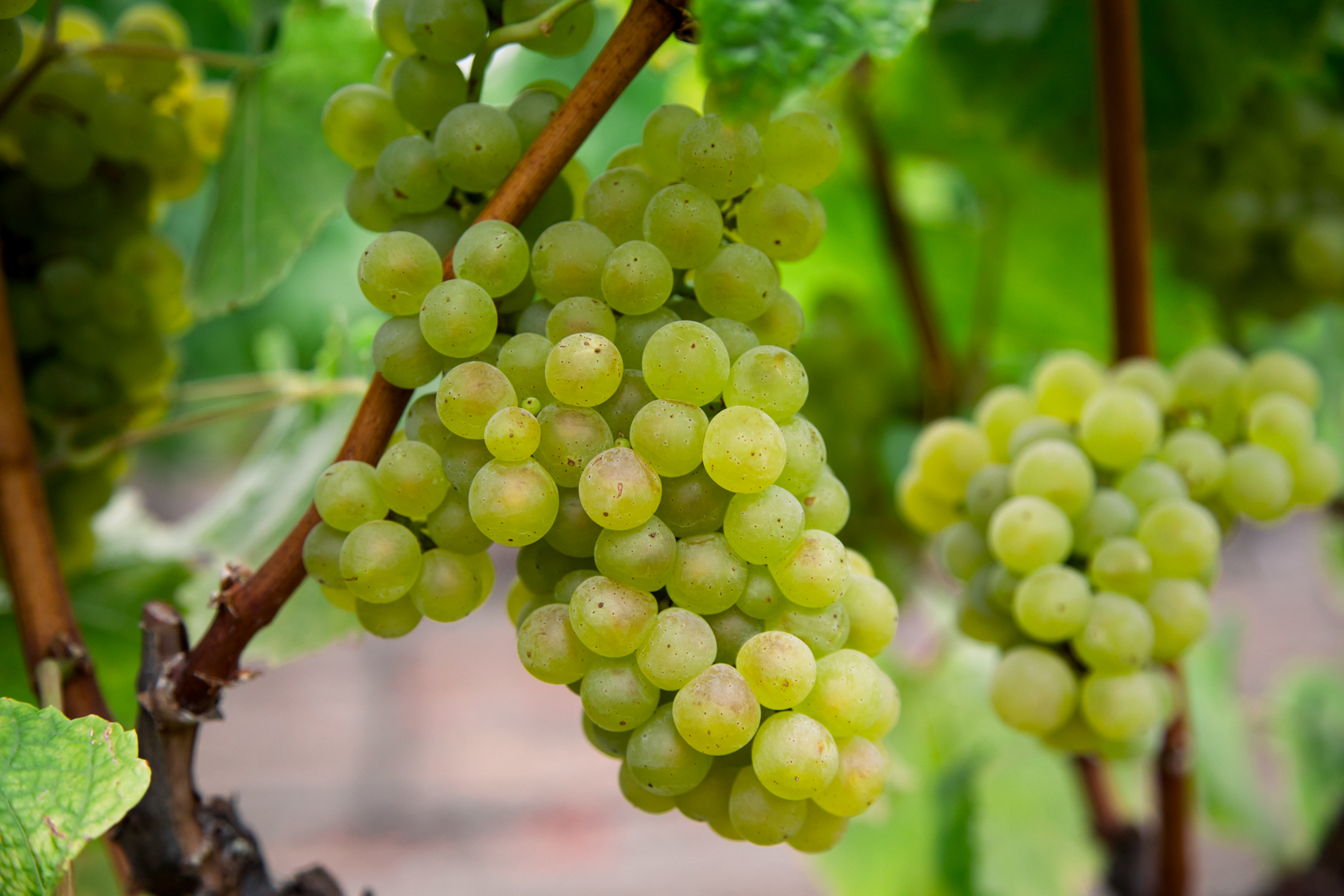
Building Character with Clones
One of the attractions of these new vineyards was also their clones. Grape varieties have different clones. I always like to explain wine clones in terms of apples. The broad category is apple, much like chardonnay, but there are so many different kinds of apples, like your traditional Red Delicious, which exhibit classic apple flavor with slightly bitter skins and sweetness without a ton of acidity. There are also Granny Smith apples that really only bring tartness and acidity. I was on the hunt for the chardonnay equivalent to the Gravenstein and Honey Crisp—the apples that have it all—the perfect blend of sweetness, acidity and flavor. It is the apple that makes you drool at first bite. We found that chardonnay clone equivalent in the rare Sees and Curtis Chardonnay field selections at the Dehlinger Ranch. These grapes are incredible; they produce an intense minerality I have not tasted coming from our fruit before. The Sees has this subtle peach aroma with some citrus, while the Curtis brings more citrus and wet stone in flavor. The natural mouth-watering acidity from both the Sees and Curtis is unparalleled. These grapes add new dimensions to Jordan Chardonnay. We also added Dijon Clone 95 for the first time in 2020, and more in 2021. Clone 95 juice has a richness and concentration to the fruit; it offers depth without being overpowering and delivers citrus and floral notes. Bringing new clones to the master blend is one of the primary ways to bring more complex aromatics and flavor to the wine.
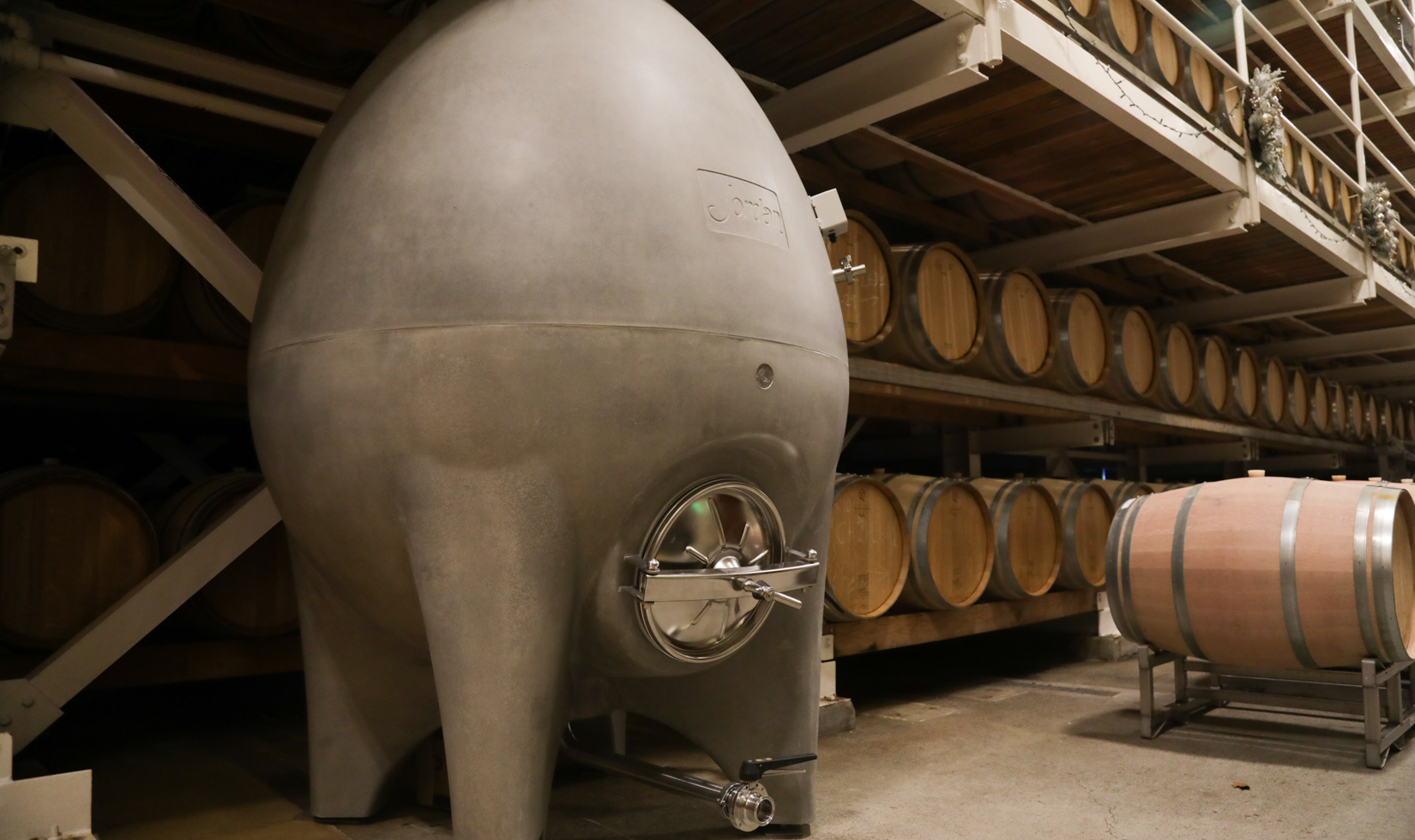
Pairing Eggs & Chardonnay Blending
In the cellar, there are only a few ways left to experiment with raising Jordan Chardonnay quality, as we have already invested in a new press in 2020 and a state-of-the-art bottling line in 2013. We also switched to only aging part of the wine in new French oak barrels beginning in 2014 and changed Jordan Chardonnay closures to the Origine by DIAM cork in 2019. Adding other fermentation and aging vessels to complement French oak is really the primary tool we have available to take this beautiful wine to the next level. And for chardonnay, that vessel is the concrete egg.
Egg-shaped vessels have been used to ferment, store and transport wine since the Greco-Roman Period—around 3,000 years ago. Archaeologists in Georgia, Greece and Italy have reportedly found the remains of oblong wine vessels made of clay, crushed stone and other concrete-like, earthen materials. Concrete fermenters evolved with the times and continued to be used in Europe for many centuries—until the French adopted oak barrel vats, known as foudres. Concrete fermenters (not the egg style) were also used by some of the oldest winemakers in California from the 1920s until the 1970s, when California winemakers began to popularize the use of stainless steel tanks for fermentation. It wasn’t until around 2001 that the concrete egg was reborn. The famous winemaker from France’s Rhone Valley, Michel Chapoutier, commissioned a French manufacturer to make an egg-shaped fermenter for him—and the trend has spread around the world. While stainless steel tanks are easy to sanitize and are good for fermentation, they don’t allow a wine to breathe and mature. Concrete, like oak, is a porous material, so the wine can receive small doses of oxygen to evolve and age. During fermentation, the round egg shape allows for continual mixing (due to the release of carbon dioxide and heat during fermentation), letting the lees or yeast solids to stay in solution and naturally increase the wine’s richness and roundness. Concrete will also bring out the minerality and enhance the freshness and wet stone characteristics. While we love oak as a tool, it can be overpowering to some of these more subtle and beautiful new blocks of fruit we are sourcing from. Concrete, on the other hand, will help this delicate wine by elevating the fruit, enhancing its natural aromas, and allowing for gradual oxygenation and aging.
Last summer, John approved the purchase of one 476-gallon concrete egg fermenter made by a local purveyor, Sonoma Cast Stone, who made its first concrete egg for a winemaker friend 15 years ago—and now egg fermenters account for 40 percent of a business that started out making concrete countertops and sinks. If John loves the 2021 Jordan Chardonnay Super Blend as much as he loved the 2005 Jordan Cabernet Super Blend, my plan is to have seven more concrete eggs by the end of 2022 so that our entire production can be partially fermented in these amazing vessels.
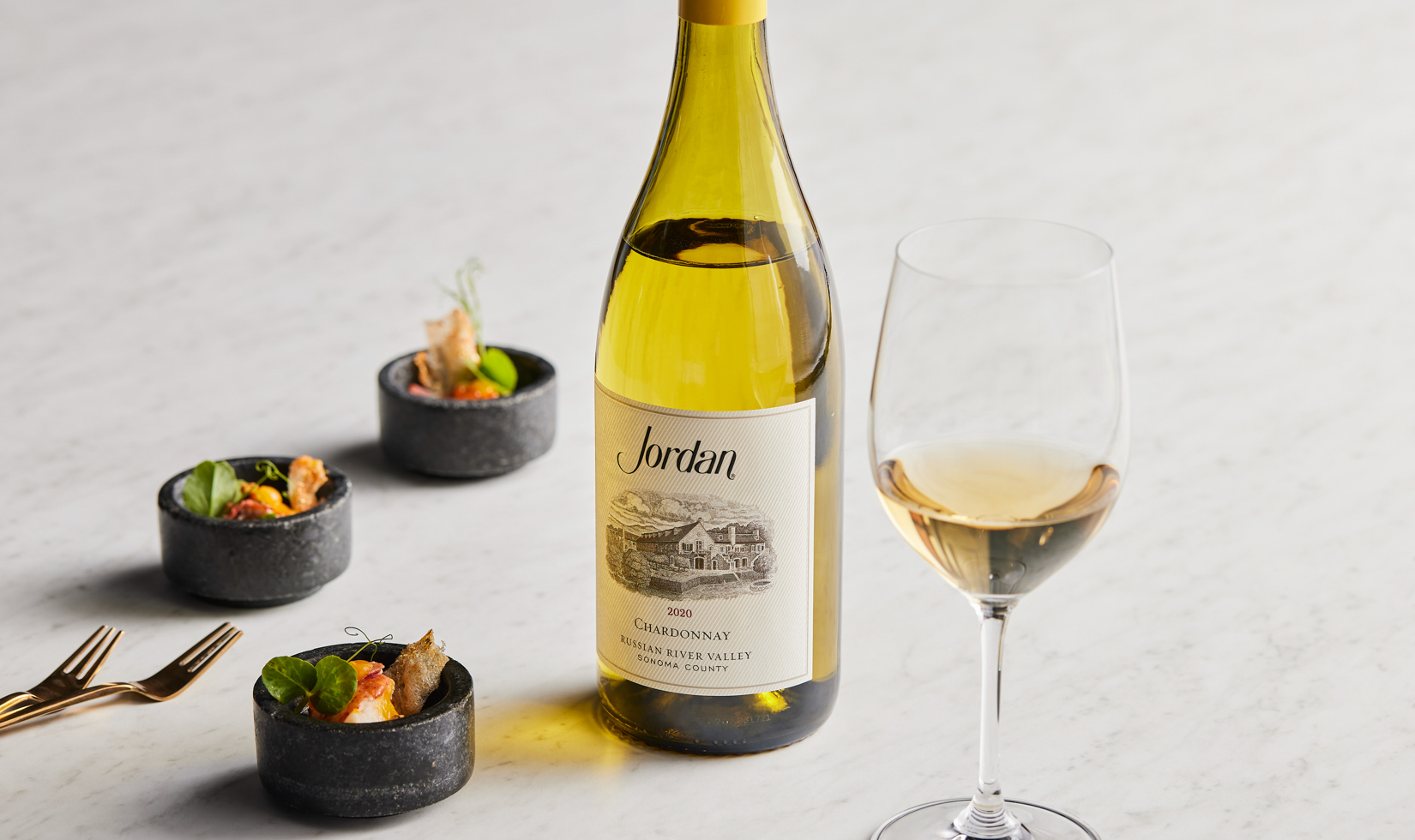
Making Chardonnay Super Blend 2.0
To create the first Jordan Chardonnay Super Blend, we kept every chardonnay block separate in different tanks to assess their sensory characteristics independently. This is the first time that Jordan Chardonnay blocks have been separated by both vineyard and clone. We will select the absolute best blocks of chardonnay and favorite clones for aging in a combination of concrete egg, French oak and stainless steel. The exact percentages are yet to be determined; we just have to wait and see how the wine evolves and let our palates lead us to the perfect blend.
As with the first Jordan Super Blend, we will evaluate the experiment in the summer of 2022 to decide if the wine is everything we dreamed it would be—and how to transition our entire production to this nuanced, even more Burgundian version of Jordan Chardonnay. I assure you that this wine will retain Jordan’s hallmark style; it will simply be an even more vibrant rendition of its former self.
Unlike Operation Super Blend 1.0, we will bottle this wine in 750mL, not magnums. (We love how Jordan Cabernet Sauvignon evolves in large format, so we wanted to see how the first super blend will taste 20 or 30 years from now.) These experimental bottlings are reserved for special events, such as our 50th anniversary in 2022.
Operation Super Blend 2.0 is only in its first year, and I look forward to our fans trying the 2021 vintage.
